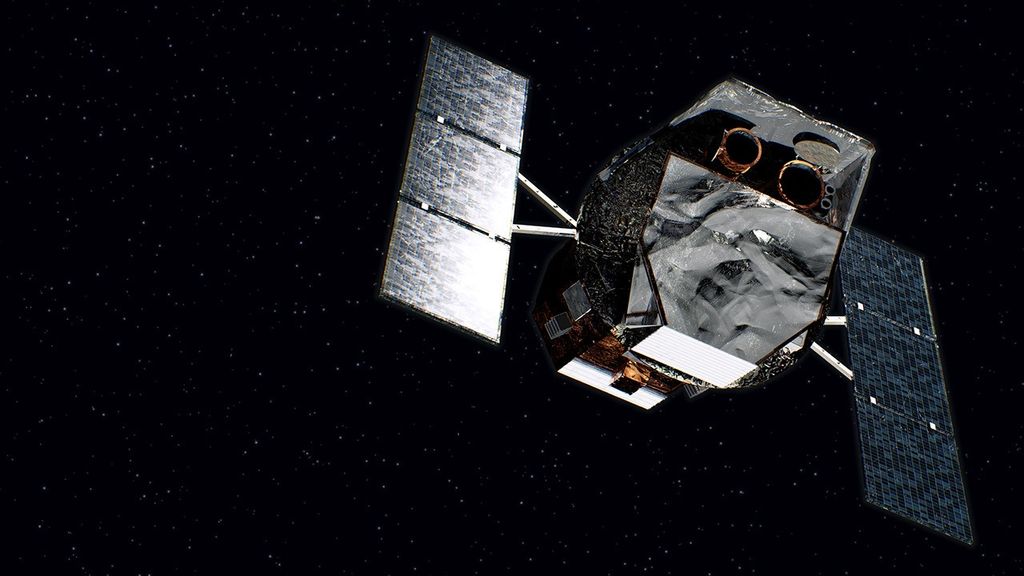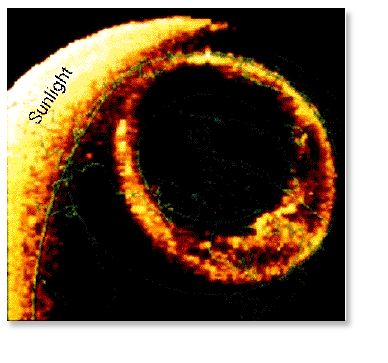Put your fingers inside a several rubber bands and pull outward. Eventually your fingers are no match, and the rubber bands pull the circle inward. That's the battle that goes on at Earth's north and south magnetic poles. We see the effect as the auroral borealis (literally, north dawn) and aurora australis (south dawn).
At the magnetic poles, Earth's magnetic field lines are nearly vertical. Plasmas and electrons traveling along the field lines can spiral in and hit the atmosphere, generating light. The eery colors we see depend on which chemicals - oxygen, nitrogen, and others - are excited in this process. Usually this treat is reserved for residents of the high latitudes - Alaska, Canada, Norway, and so on. At lower latitudes the field lines are parallel to the equator, so no particles cross over and no aurora forms.
The auroral oval is the footprint in the atmosphere of the boundary between the highly stretched field lines of the polar cap and the more normal field lines at lower latitudes. When the solar wind blows hard, this boundary moves equatorward - sometimes as far as Huntsville, Tel Aviv, or Kyoto - as more high latitude field lines are blown out into the tail.
In the sector near local noon - the "cusp"- auroral zone field lines incline and curve directly into the solar wind. This channels solar plasma all the way down to the ionosphere. Following the auroral zone away from noon is equivalent to following the magnetospheric boundary layer along its flanks and into the turbulent wake region in the tail. With a little imagination, these features can be visualized in an image of the auroral oval from space. All the while, the auroral zone is a region of heating and strong winds in the ionosphere and upper atmosphere.
Go to the next chapter
or
Return to the table of contents
November 20, 1996
Authors: Dave Dooling, B.L. Giles
Curator: Bryan Walls
NASA Official: John M. Horack



































